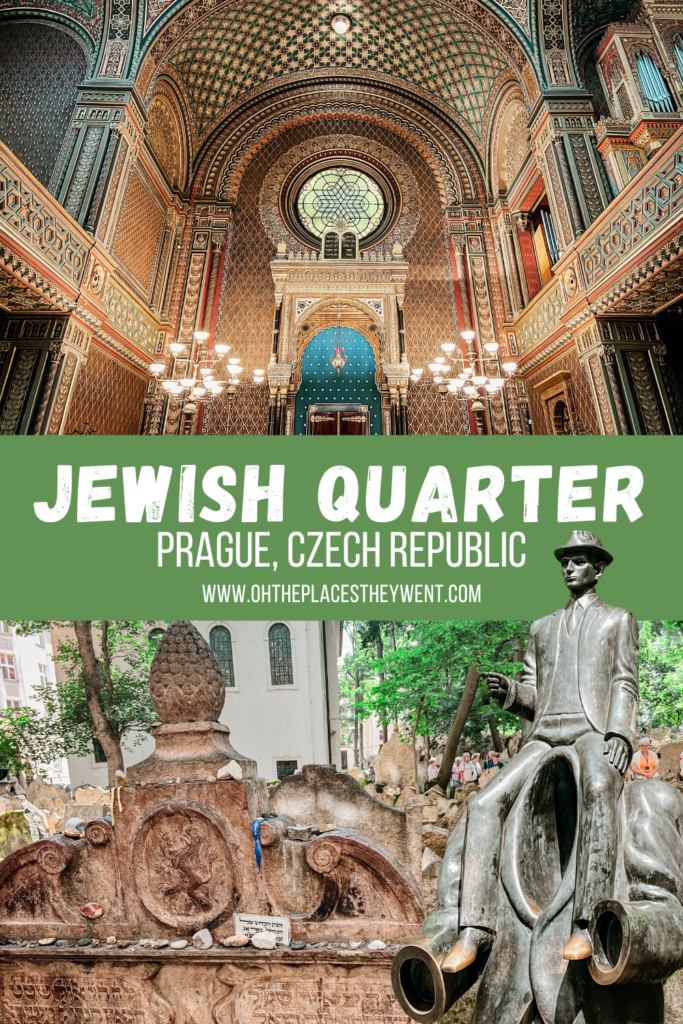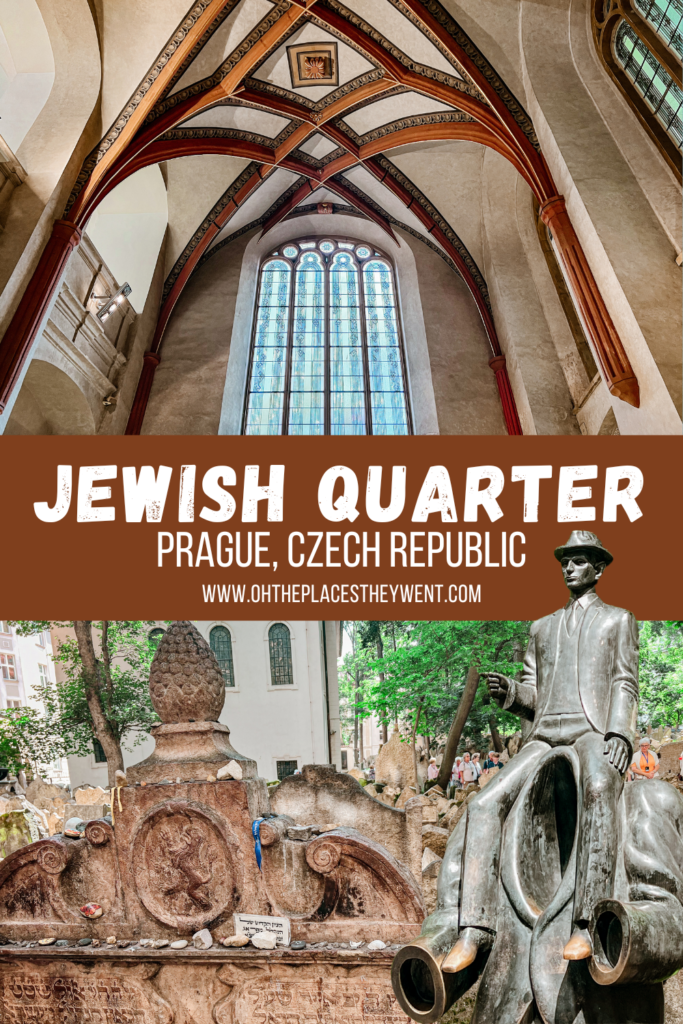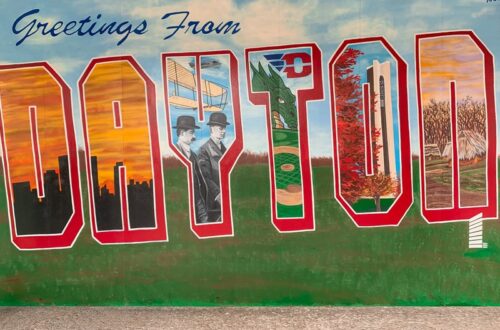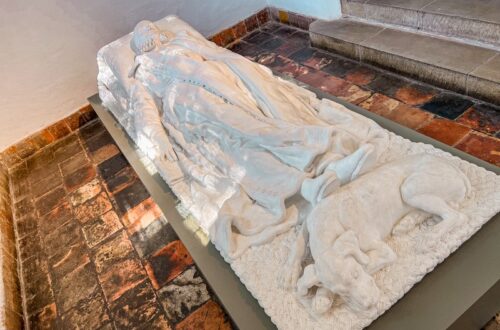Jewish Prague: The Four Synagogues You Must See
Prague is home to one of the oldest and most prominent Jewish centers in Central Europe, making a visit to the city incomplete without a stop in Josefov, the historic Jewish Quarter. From Europe’s oldest functioning synagogue to the haunting beauty of the Old Jewish Cemetery, this neighborhood is rich with history and culture, but you’ll have to know where to look to find it.
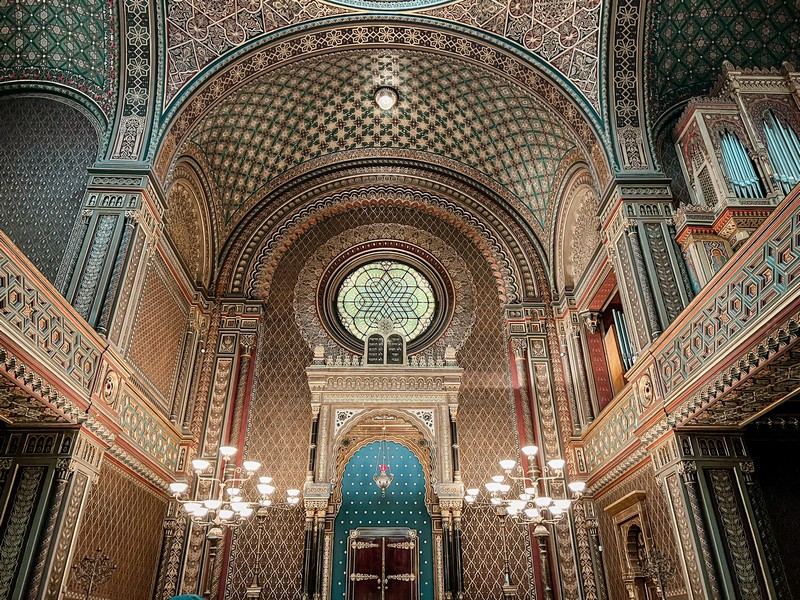
The Jewish Quarter of Prague, Czech Republic is rich with history and culture. Here is where to go to find it:
(This post contains affiliate links, which means I receive a certain percentage of a sale if you purchase after clicking at no cost to you. Thank you for your support.)
Basic Info
- Days: You can visit the sites every day except Saturdays and Jewish holidays.
- Hours: Summer: 9:00am ~ 6:00pm; Winter: 9:00am ~ 4:30pm
- Admission: You can walk around the Jewish Quarter freely, however, if you want to enter the historical monuments and buildings, you’ll need to purchase a Jewish Town Ticket.
- You can purchase your ticket at the Jewish Museum In Prague Information Center at Maiselova 15.
Some Important Background
Josefov, Prague—also known as the Jewish Quarter—is located near the Old Town Square. A historic center of Jewish culture, it was home to distinguished rabbis during the early Middle Ages, whose ideas shaped Jewish communities worldwide. I had no idea about the amazing Jewish history of Prague so I jumped at the chance to join a tour through the area.
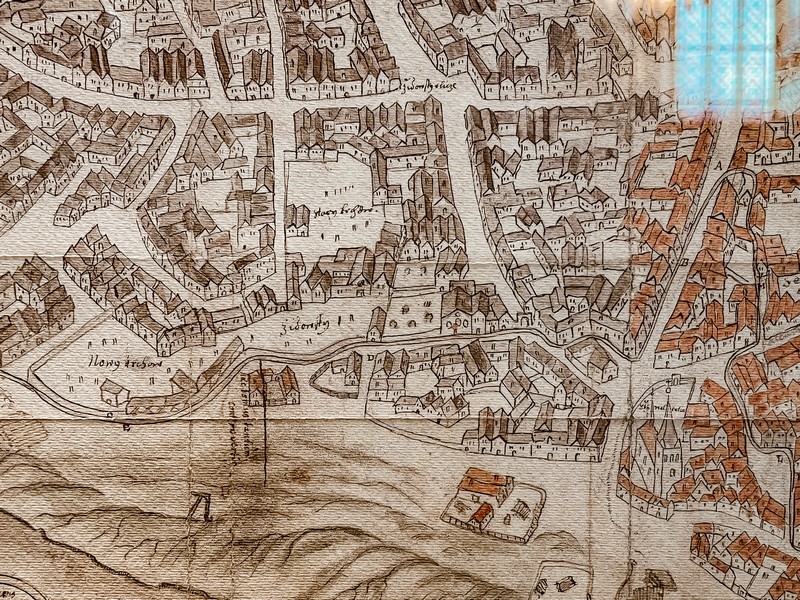
The “Golden Age” of the Jewish Quarter occurred during the reign of Rudolf II at the turn of the 16th and 17th centuries. This period saw the rise of numerous prominent rabbis, scholars, and philosophers, many of whom also contributed to fields such as astronomy, mathematics, and history.
The last cultural peak of Jewish life in Prague came at the turn of the 19th and 20th centuries, marked by the works of poets, writers, philosophers, and artists who significantly enriched modern Czech, German, and Hebrew literature and culture.
Odd Fact: The Jewish Quarter survived Nazi occupation because Adolf Hitler wanted to preserve it and make it into a “Museum of an Extinct Race”.


From Our Guide
According to our guide, people can be disappointed by their visit to the Jewish Quarter as it doesn’t seem as vast as Jewish districts in other major European cities.
On top of that, it’s heyday was some time ago so the area changed a lot as the Jewish residents moved away and into other districts of the city. This doesn’t mean it isn’t worth the stop though, the significance of this area in Jewish history and culture is gigantic.
The Synagogues You Need To See
Maisel Synagogue
Built in 1592, the name of this synagogue refers to its owner Mordechai Maisel, the Mayor of Prague’s Jewish Town at the time. When it was built, it was the largest and most impressive building in the quarter.

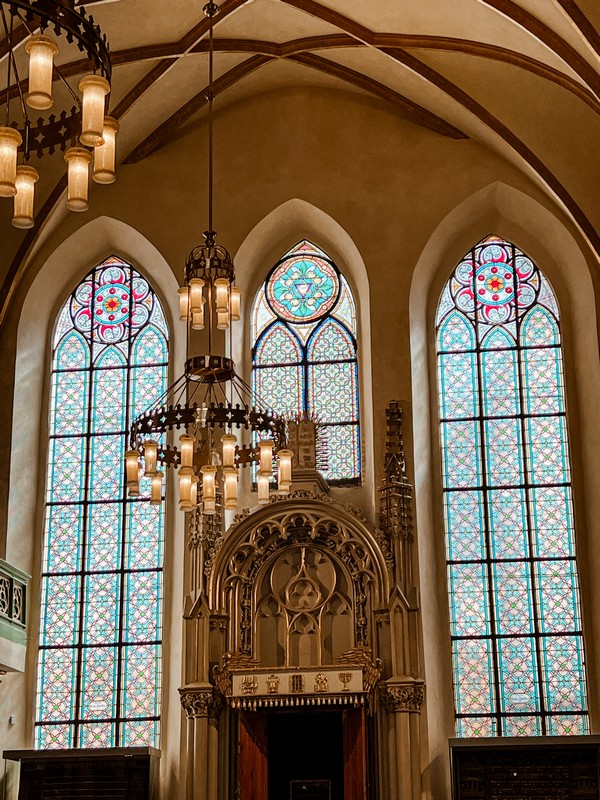
After WWII, the synagogue became a depository of the Jewish Museum of Prague and houses an exhibition on Jewish history in the Czech lands from the 9th century until the Enlightenment. This makes it a good place to visit first to have more of an understanding of the area and what was happening throughout history here.
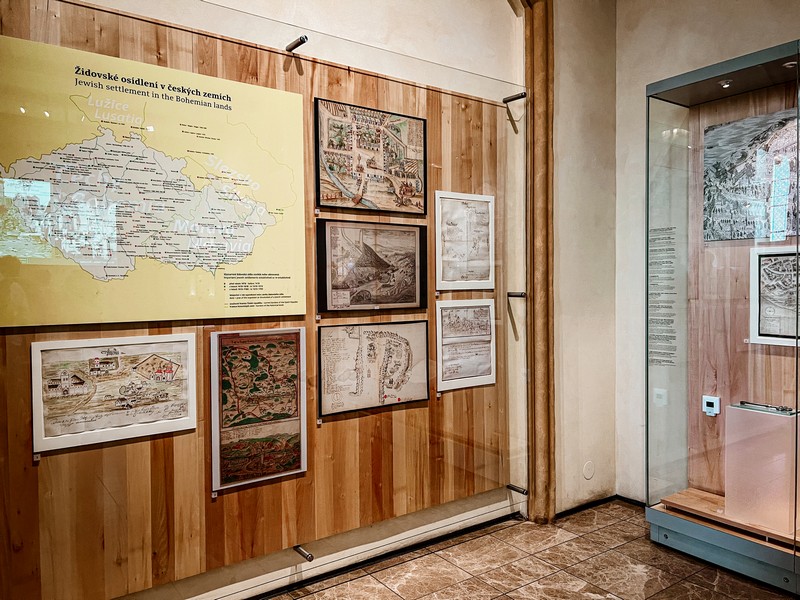
- Address: Maiselova 10, Josefov, Prague, Czech Republic
Old-New Synagogue
This is the oldest functioning synagogue in all of Europe. Built in 1270, it’s astounding that it’s still standing today. According to legend, the foundation stones of the temple were brought from the Temple in Jerusalem.

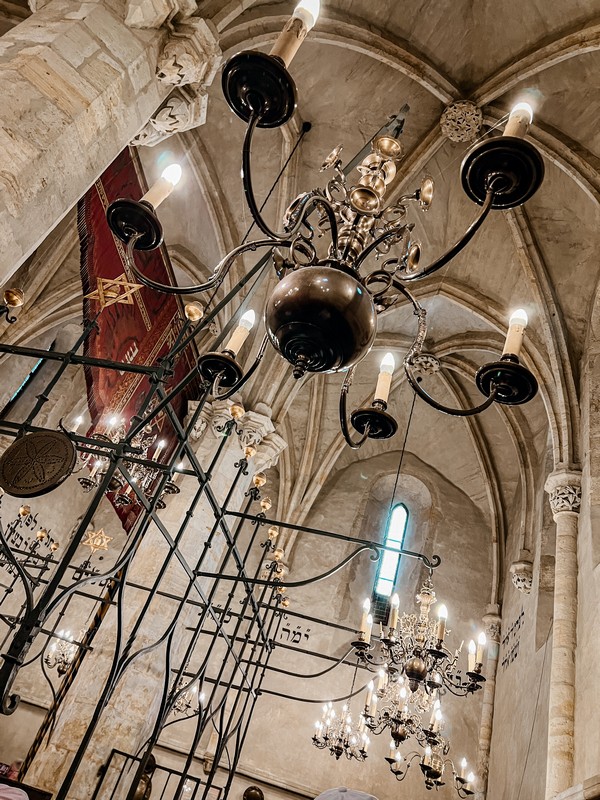
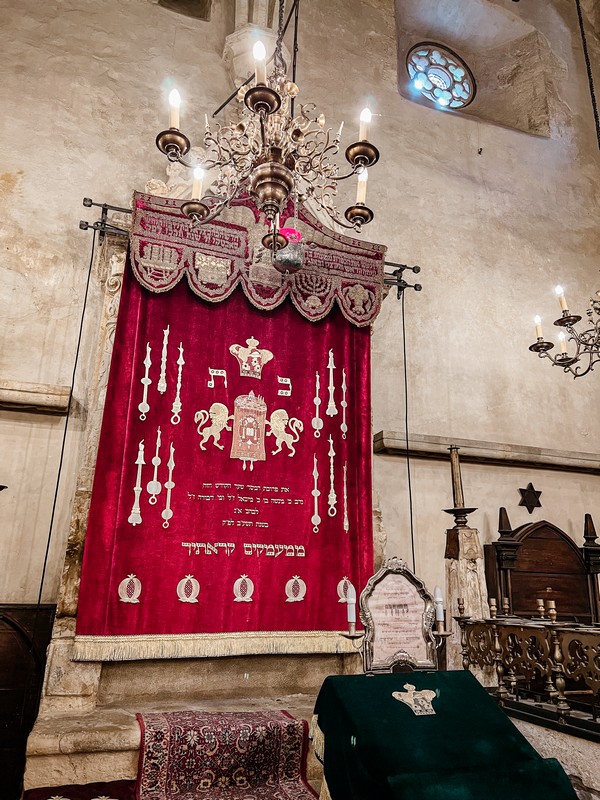
The interior is very simple and much less ornate than the other synagogues you’ll find in the area. Still in use by the orthodox Jewish community, in the center, you can see the bimah, a raised area for the reader where the Torah scroll is placed.
There are seats placed around the perimeter of the main hall which you can sit in to take it in. Look for the Torah Ark, a cabinet where the Torah scrolls are kept.
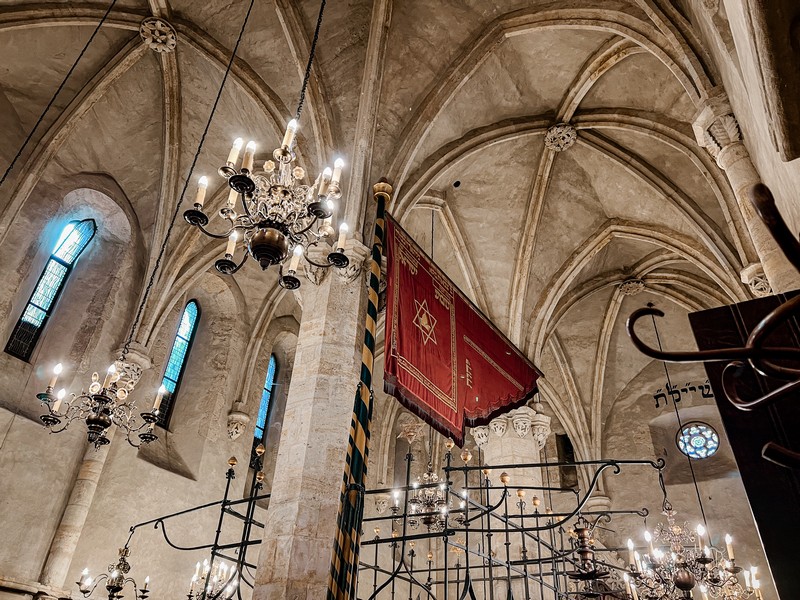
Interesting Fact: The most famous Prague legend is about the Golem, a clay figure created by the renowned Rabbi Loew to protect the Jewish community. Brought to life through mystical rituals, the Golem relied on a clay tablet placed in its mouth to remain animated. The tablet was traditionally removed on Saturdays, but one time Rabbi Loew forgot, and the Golem began rampaging through the city. The rabbi quickly removed the tablet, deactivating the Golem, which was then placed to rest in the attic of the Old-New Synagogue. For centuries, entry to the attic was strictly forbidden.
- Address: Červená, Josefov, Prague, Czech Republic

Pinkas Synagogue and Old Jewish Cemetery
Pinkas Synagogue is the second oldest synagogue in the city and was built in 1535. It was originally built as a private house of prayer for the family of Aaron Meshulam Horowitz.
Interesting Fact: The Jewish Quarter is the birthplace of novelist Franz Kafka so you’ll find that every book story carries books by Kafka in multiple languages. He attended services at Pinkas Synagogue in the 20th century.
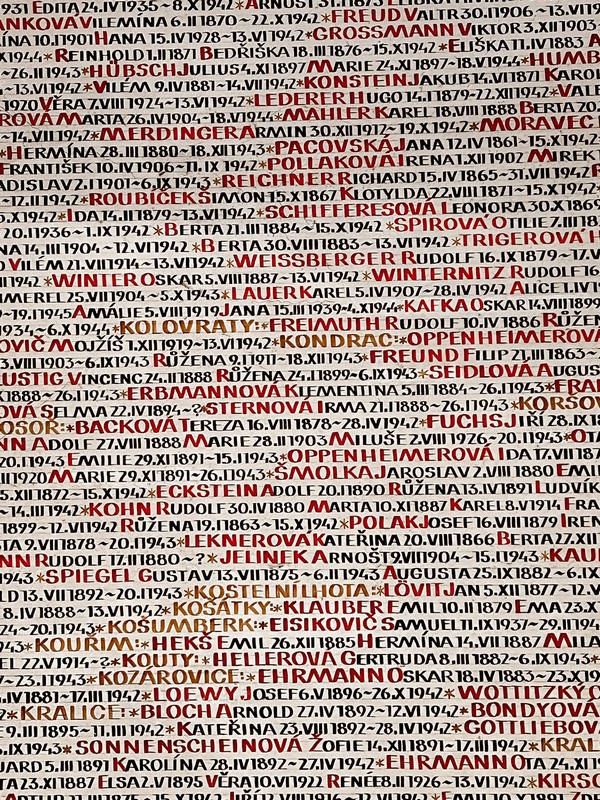
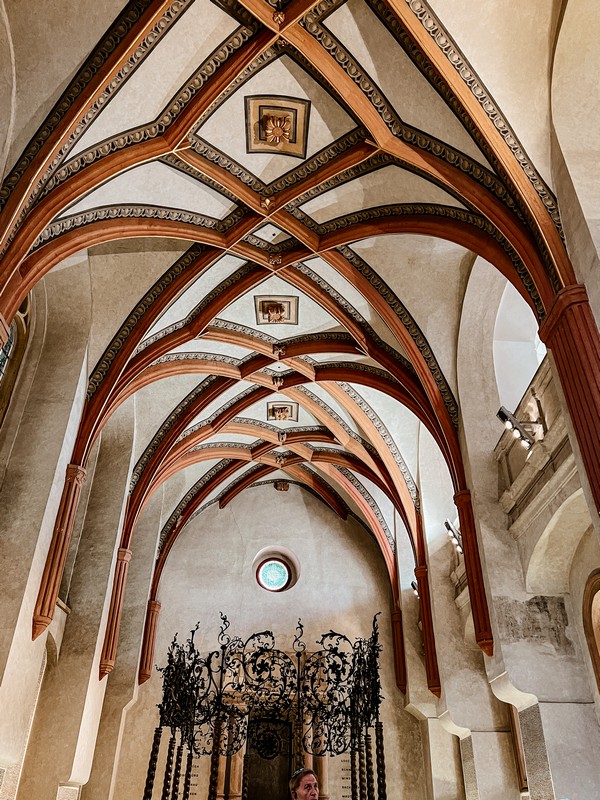
Today, visitors will step inside to see the vast Memorial to the Victims of Shoah, or the Holocaust. There are more than 80,000 names written on the walls and they all belong to Czech Jews that never returned from the concentration camps after WWII.
The memorial was one of the earliest memorials of its kind in Europe and was done by two painters Václav Boštík and Jiří John between 1955 and 1960. It was closed to the public for more than 20 years when the Soviets invaded in 1968, but was reopened to the public in 1995.

After walking through the memorial, outside, there’s a path which leads through the Old Jewish Cemetery, one of the oldest surviving Jewish burial grounds in teh world. People were buried here from the 15th century until the 18th century.
Interesting Fact: The oldest tombstone in the Old Jewish Cemetery is from 1439 and belongs to Rabbi Avigdor Kara, a famous Jewish writer.
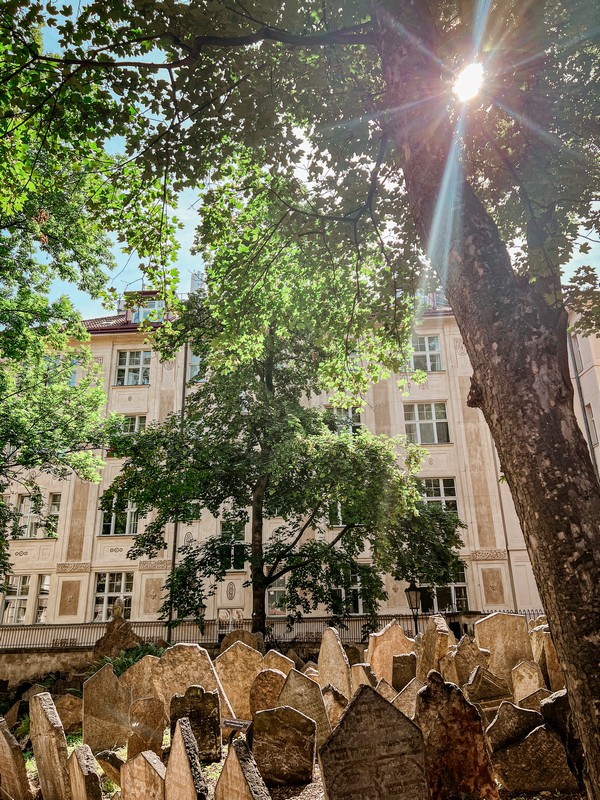
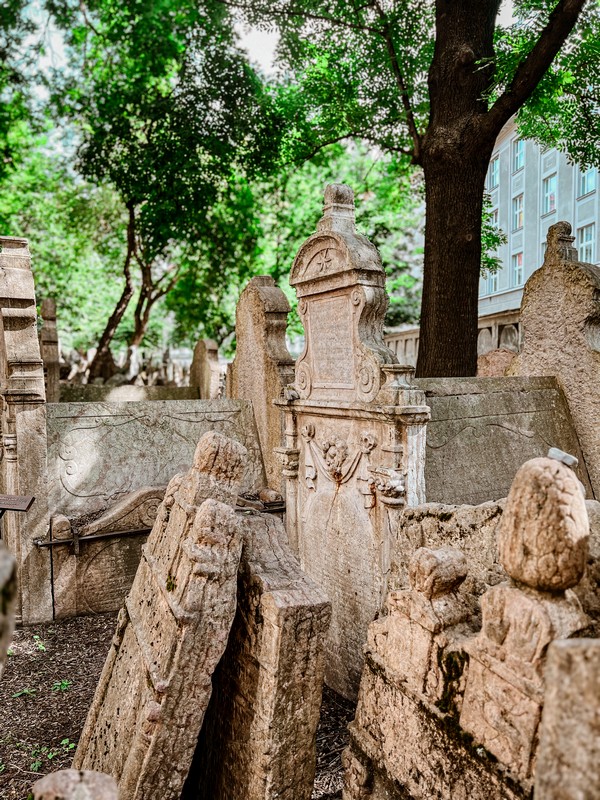
Due to space issues, there are twelve layers of the buried here and there are 12,000 tombstones that are visible though there are even more that are hidden beneath the layers.
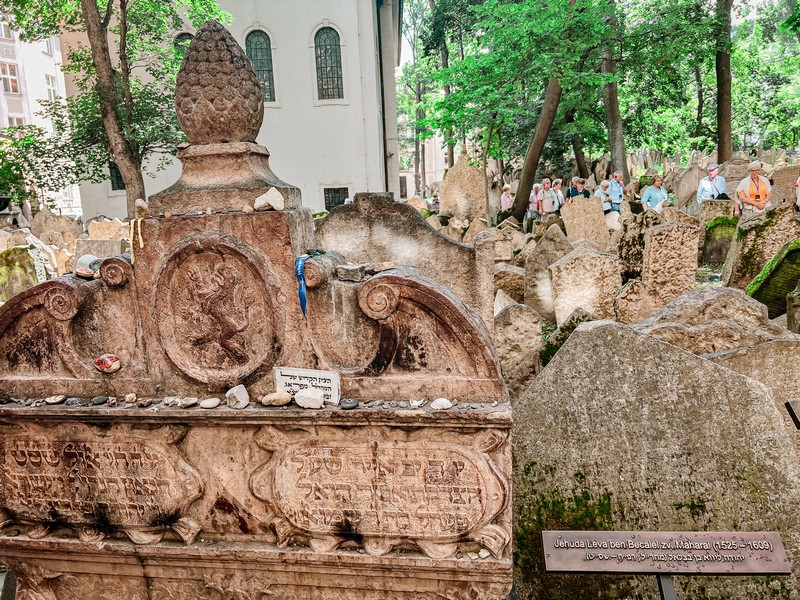
Interesting Fact: The grave of Rabbi Loew is the most famous in the graveyard. The scholar is said to have invented Golem.

Look for the symbols: There aren’t just names on the tombstones, but there are also symbols for ancestral lineage.
- Two hands: For descendants of Aaron, the brother of the prophet Moses.
- Menorah: Symbolizes deep commitment to Judaism throughout the deceased’s entire life.
- Bookshelf: Indicates the deceased was a scholar or rabbi.
- Scale: Indicates the deceased was a pharmacist.
- Scissors: Indicates the deceased was a tailor.
- Address: 3, Široká 23, Josefov, Prague, Czech Republic


Spanish Synagogue
The Spanish Synagogue has one of the most stunning and eye-catching interiors of all of them. Built in 1868, it was designed in the Spanish Moorish style and was one of the last houses of prayer built in the Jewish Quarter.
The Spanish Synagogue dazzles with intricate arabesques, shimmering gilt, and vibrant polychrome motifs in rich hues of green, blue, and red. Its breathtaking interior showcases masterpieces of Spanish-inspired architecture, from the towering Torah ark to the awe-inspiring 10-meter-wide central dome.
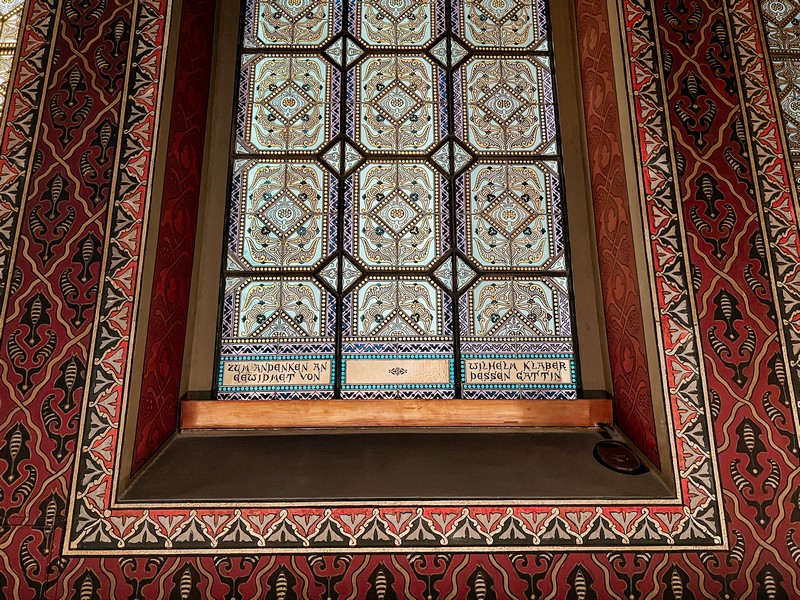
Designed by Josef Niklas and Jan Bělský, with interiors crafted by Antonín Baum and Bedřich Münzberger, every detail exudes grandeur. Even the organ and ark reflect Islamic influences, blending marble, gilt, and polychrome into a canopy crowned by the Tablets of the Decalogue. The dome’s intricate patterns will memorize you and you’ll want to take a seat so that you can look up to enjoy every detail.

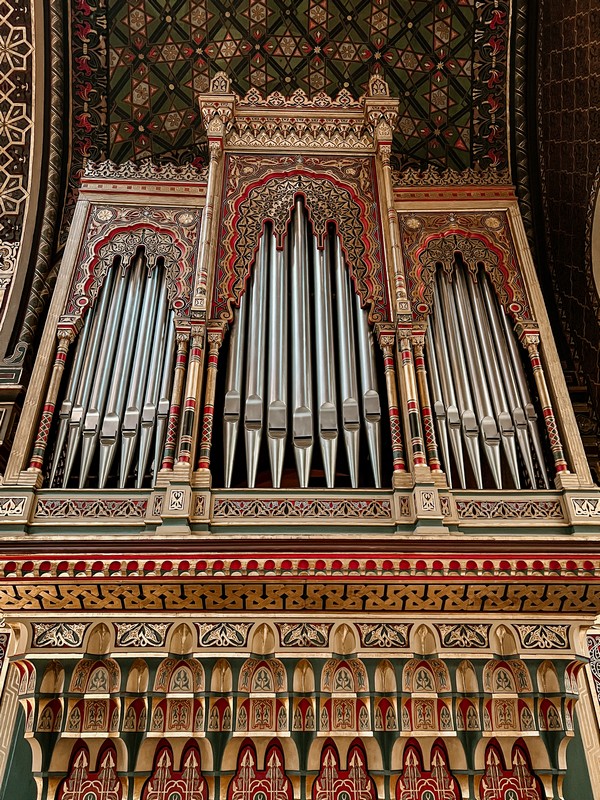

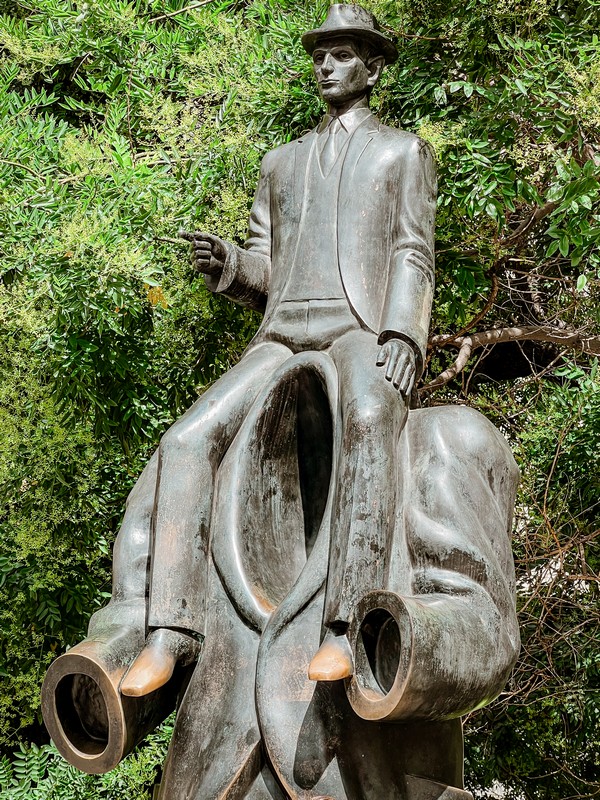
Interesting Fact: There is a statue outside of the Spanish Synagogue for Kafka that was created by Jaroslav Róma and was erected in 2003. The artist was inspired by Kafka’s story Description of a Struggle.
- Address: Vězeňská 1, Staré Město, Prague, Czech Republic
I learned a lot about Jewish culture and history while I was in Prague. When you visit, I highly recommend joining a tour so that you can really appreciate how important this area was.
Did you like this post? Pin iT!
